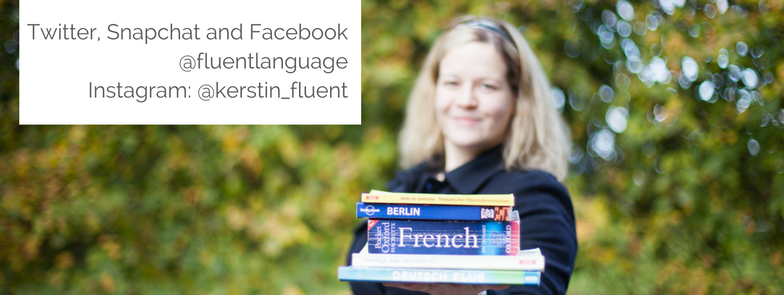Millions of people use apps to learn languages. Duolingo, Memrise, HelloTalk, Skype...all of these apps are made to help you learn languages. But what about the ones you use with your friends?
Can you use a fun social network like Facebook for language learning?
This is the question at the heart of my quest "28 Days of Social Media for Language Learning". I am using materials from the course Social Media Success from Lindsay Dow - a great strategic course to help you learn languages.
Now I'm in Week 3
More than halfway through now!
Obviously I'm developing favourites but I'm also enjoying the ones I started with and I am valuing the accountability.
One of the best results is that I feel like my progress is more visible. On many days when I can't find the time for a study session, the social media tasks from Lindsay's course are helping me add a little more time.
This week, it's been impossible to find concentrated time to learn my main language. But social media came through again.
Mistake Goals
In Social Media Success, Lindsay talks about the idea of making mistakes. She has cool recommendations for the best social networks and also for the easiest ways of doing this.
Her course talks about making mistakes as a part of documenting progress. In other words, you need to do this - you can't avoid it. Lindsay's mistake goals are a way to celebrate your language learning progress by showing the work you do behind the scenes. I found that the best social network for me to do these was Instagram, not Snapchat, as it was more likely that I would get corrections and encouragement.
Key Lesson: Make mistakes in your learning and share them proudly. It's a great way to get helpful feedback from native speakers.
The cool thing about this week was that the algorithms of Pinterest learn very quickly. I have added no more than 10 new pins about the Welsh language, but the homepage is reacting very quickly and showing me more relevant pins. I haven't been able to find a lot of variety for Welsh, and I think the best languages on Pinterest are "school languages".
It's also great for how-to and for goal setting and motivating systems. I am a bullet journal user, and the visual social networks like I Pinterest and Instagram are great for finding new ideas for organising things.
And finally, if you want to meet other teachers who really care about making cool language lessons, then this is your place to be.
Key Lesson: The best language materials on Pinterest are available in the big school languages: French, German, Spanish, English.
Have you found a board you love? You can share it in the comments or in our Facebook Group.
Twitter is one of my favourite social networks. It's full of smart and opinionated people, it moves quickly and it has its own sense of humour. This week I tweeted in Welsh and I made a Twitter list (Lindsay teaches how to do this in her course, too). The list is awesome, very very useful for getting that shot of Welsh when I only have a few minutes.
Twitter has another advantage: This is where native speakers really write how they talk. You can see what slang and natural Welsh looks like, and I liked it lots. For example, this tweet from a singer Osian Roberts shows how "Dw I eisiau" becomes "Dwisio":
Joe Allen yn siarad yn wych ar @BBCRadioCymru wan. Dwisio mynd am beint hefo'r boi!
— Osian Huw Williams (@osianhuw) December 26, 2016
Key Lesson of the Week: Twitter is not just for tweeting - you can easily build a natural language resource in bitesize using lists.
Hashtagify
The site hashtagify is like a search engine for Twitter hashtags that are relevant to whatever you are interested in. So for example, you want to type in "learn German" in the search. The site will then show you popular tweets, as well as the other hashtags that people use when they talk about learning German. Very useful!
So here we are at the end of week 3. I am not sure how much new language I got to study using the social networks, but I definitely have been consuming and practicing more because of it!
Join the challenge for the last few days, here's where to go:
1) Visit our Facebook Group to connect with other language learners and download Lindsay's prompts
2) Join the course Social Media Success by Lindsay Does Languages
3) Connect with me on your favourite app!
- Twitter @fluentlanguage
- Snapchat fluentlanguage
- Pinterest fluentlanguage
- Instagram @kerstin_fluent
4) You will also need the 28 Day Planner, which you candownload here.
Comment over here to tell me how it's going!



